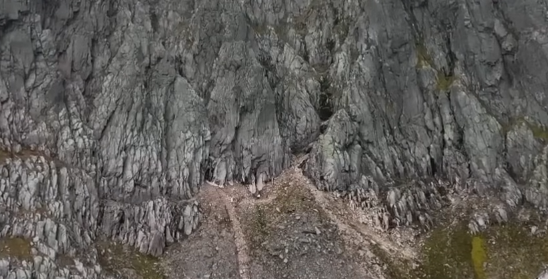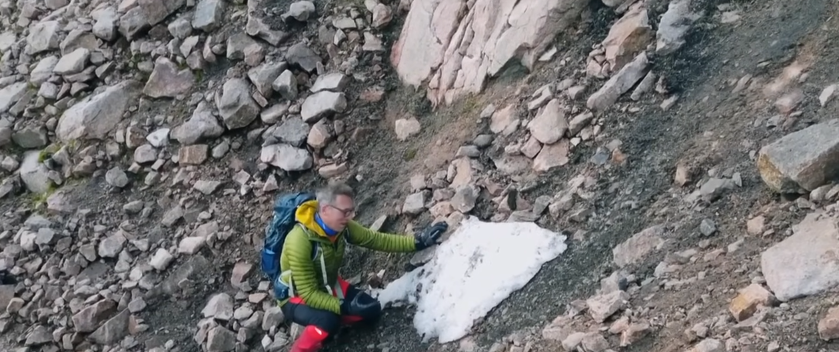For the fourth consecutive year, the UK’s longest-lasting snow patch has vanished, marking another worrying trend in the ongoing effects of climate change. Located in the Cairngorm Mountains of Scotland, this snow patch had once been a symbol of enduring winter conditions in the region, surviving through summer and into autumn. However, as global temperatures rise and weather patterns become more unpredictable, this iconic feature of the UK’s natural landscape is becoming increasingly rare.
What is the Longest-Lasting Snow Patch?
The Cairngorms’ longest-lasting snow patch is often referred to as the “sneeuw patch” by locals and experts alike. Traditionally, it would endure through the summer months, even surviving heatwaves and droughts. It was a key feature for scientists studying snow cover and its role in local ecosystems. For decades, this patch of snow was one of the last remnants of winter each year, often holding on until late into the autumn before finally melting. But in recent years, it has been vanishing earlier, raising concerns about the future of snow cover in the region.
The Impact of Climate Change on Snowfall in the UK

The disappearance of the longest-lasting snow patch is a stark reminder of the ongoing effects of climate change. According to meteorologists, warmer temperatures and shifting weather patterns have resulted in significantly less snowfall in the UK, particularly in Scotland’s higher altitudes. While snowfalls are still common in winter, the persistence of snow cover has been greatly reduced.
Climate scientists warn that the decline in snow cover could have far-reaching implications for the environment. Snow plays a crucial role in regulating temperature, influencing water levels in rivers, and supporting various ecosystems. Without long-lasting snow, ecosystems that rely on the slow melting of snowmelt throughout the year may struggle.
The Disappearance of Snow Patches: A Symptom of Global Warming

Experts have long predicted that snow patches in mountainous areas like the Cairngorms would become more rare as global temperatures increase. The frequency of these disappearing patches highlights the accelerating effects of climate change. The Cairngorms snow patch has become a symbol of this shift, marking the stark contrast between the UK’s historical winter conditions and the warming climate.
Historically, snow patches in the UK were reliable throughout much of the year, with some even surviving for several years at a time. The loss of this longevity in snow patches suggests a rapid change in the UK’s weather patterns, as well as in the broader climate.
Could the Snow Patch Ever Return?
While scientists remain hopeful that cold winters will eventually return, the reality is that the long-term trend points to a further reduction in snow cover in the UK. The Cairngorms’ longest-lasting snow patch may be a rare sight in the future, as the effects of climate change continue to shape the landscape.

Experts emphasize the need for urgent action to address climate change in order to preserve the UK’s natural heritage, including its iconic snow patches. This includes reducing carbon emissions, enhancing renewable energy efforts, and taking steps to mitigate the warming of the planet.
What’s Next for the Cairngorms and Other Snow Patches?
The fate of snow patches in the UK is tied closely to the future of global climate change policy. If the current warming trend continues, it’s possible that snow patches across the country will become a thing of the past. As the Cairngorms patch vanishes for the fourth straight year, it serves as a stark warning of the changing climate and the potential loss of natural landmarks that many may take for granted.
While it may not be possible to reverse the damage done to date, continued research and action could help slow the disappearance of these snow patches and allow future generations to witness the wonder of a true British winter.
Conclusion: A Symbol of a Warming World
The disappearance of the UK’s longest-lasting snow patch for the fourth consecutive year is more than just an environmental shift—it’s a symbol of the urgent climate crisis the world is facing. As the snow patch vanishes from the Cairngorms, it highlights how rapidly our climate is changing and how crucial it is for everyone to take action to protect the planet.
By addressing climate change head-on, there is still hope to slow down or even reverse some of these effects, allowing future generations to enjoy the natural beauty of the UK’s snow-covered landscapes for years to come.
Frequently Asked Questions (FAQ)
1. Why did the UK’s longest-lasting snow patch disappear?
The snow patch disappeared due to rising temperatures and climate change, which have led to warmer winters and less consistent snowfall in the region.
2. Where is the UK’s longest-lasting snow patch located?
The snow patch is located in the Cairngorm Mountains in Scotland.
3. How long has the snow patch been disappearing for consecutive years?
The snow patch has disappeared for the fourth consecutive year, a worrying sign of changing weather patterns.
4. What does the disappearance of snow patches mean for the environment?
The disappearance of snow patches can impact ecosystems that rely on slow snowmelt, and it highlights the broader effects of climate change on the environment.
5. Can the snow patch return in the future?
While it’s uncertain, the likelihood of the snow patch returning to its former consistency is low without significant action to address global warming.
Any Weathers News –Click here










